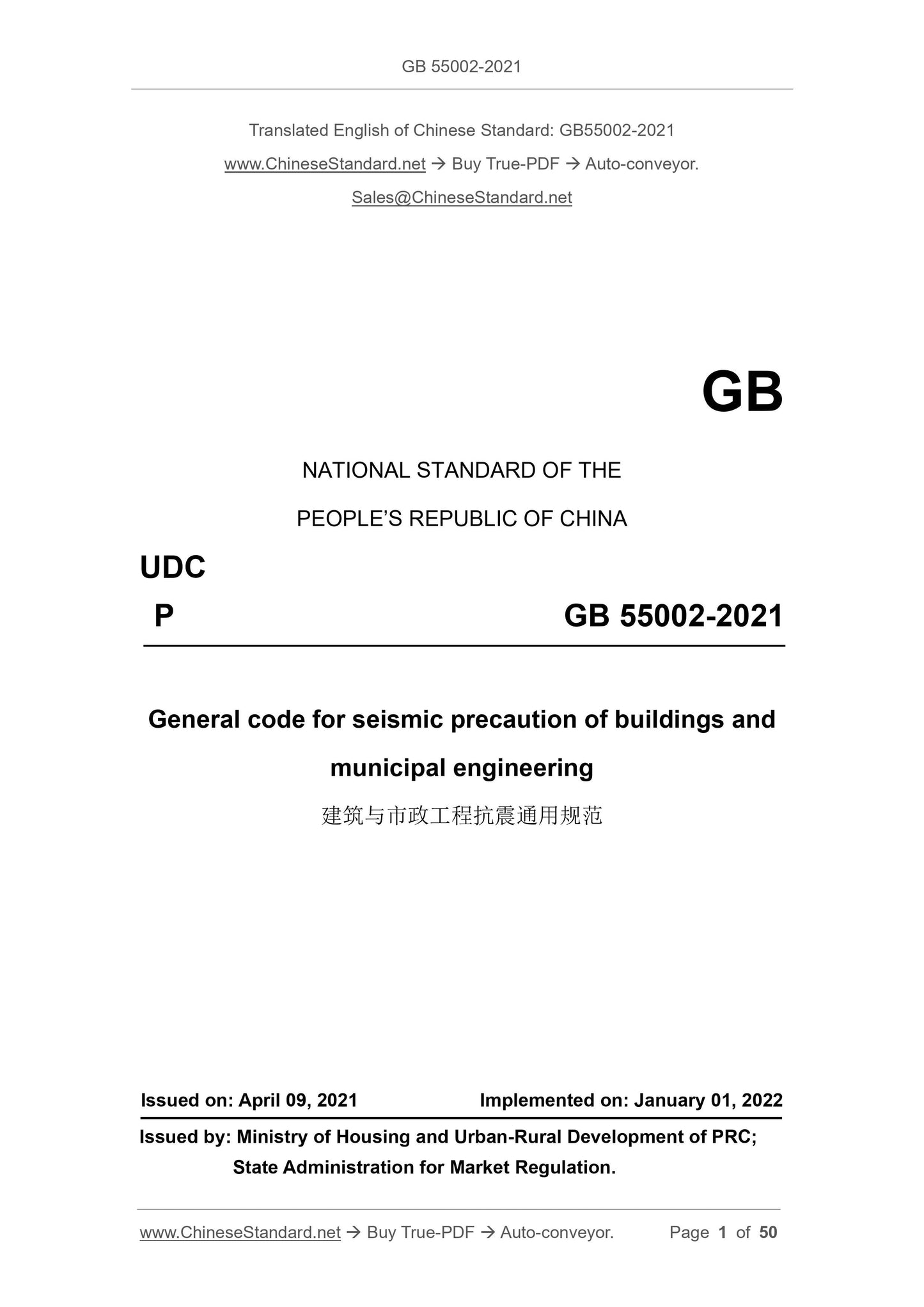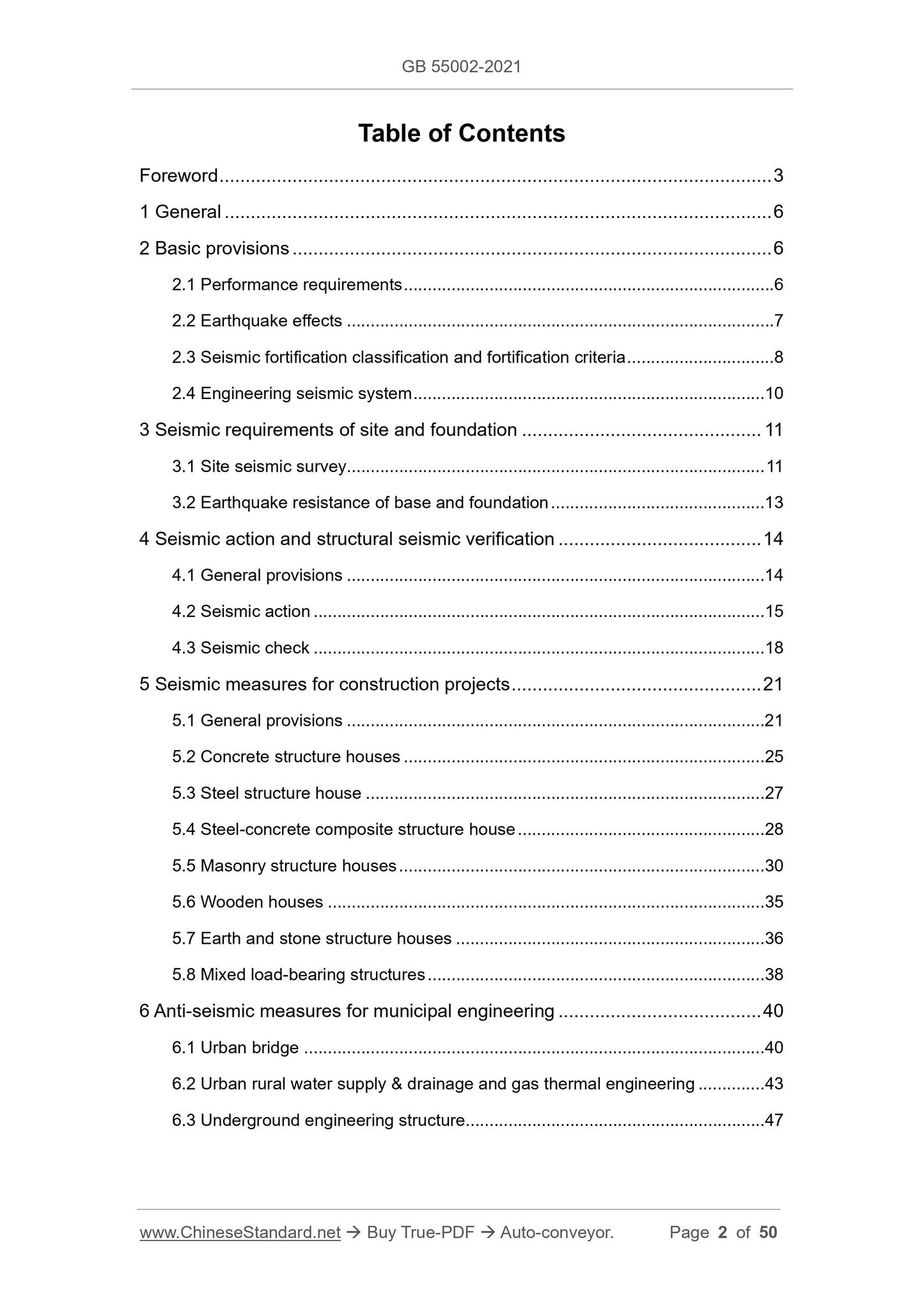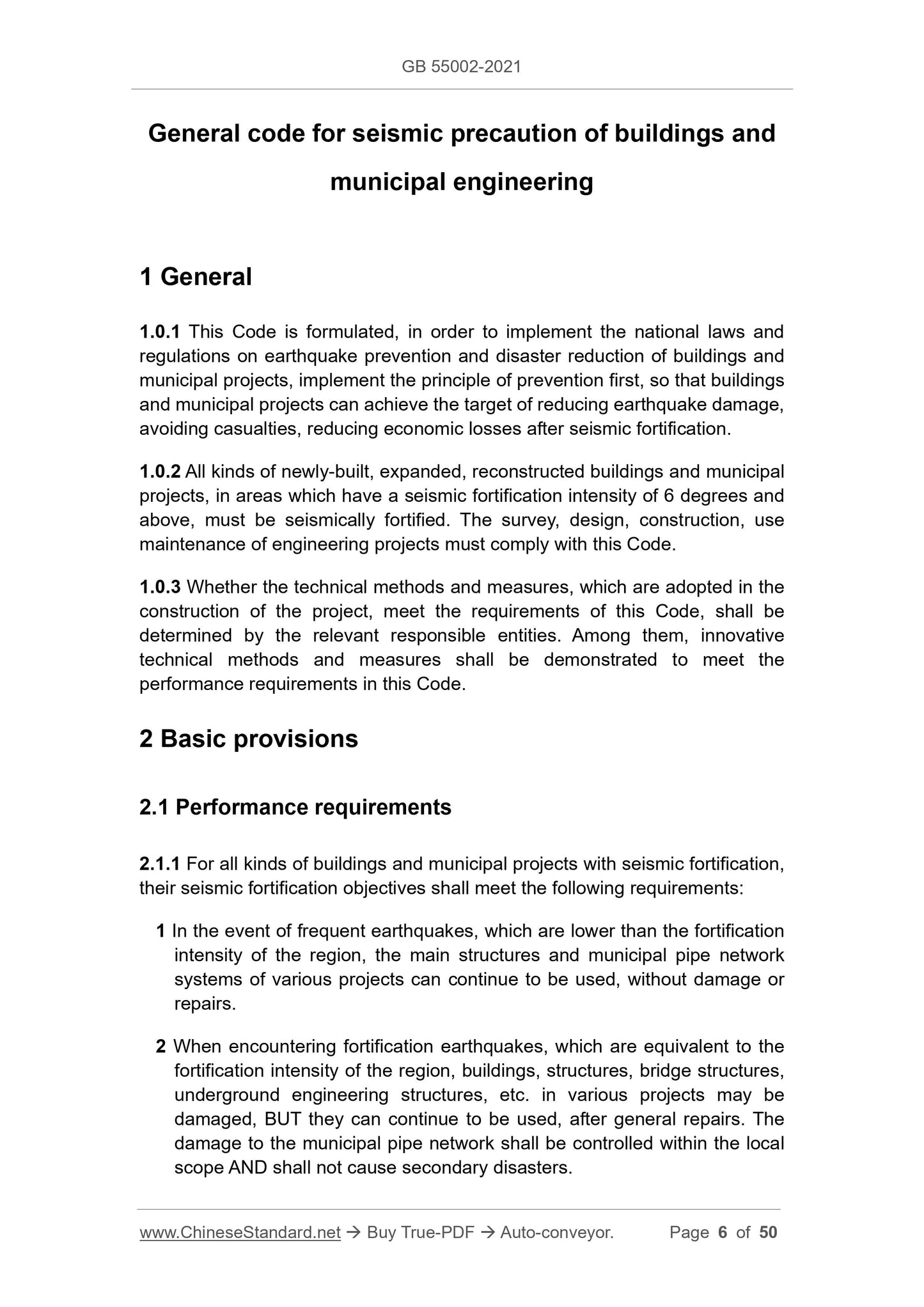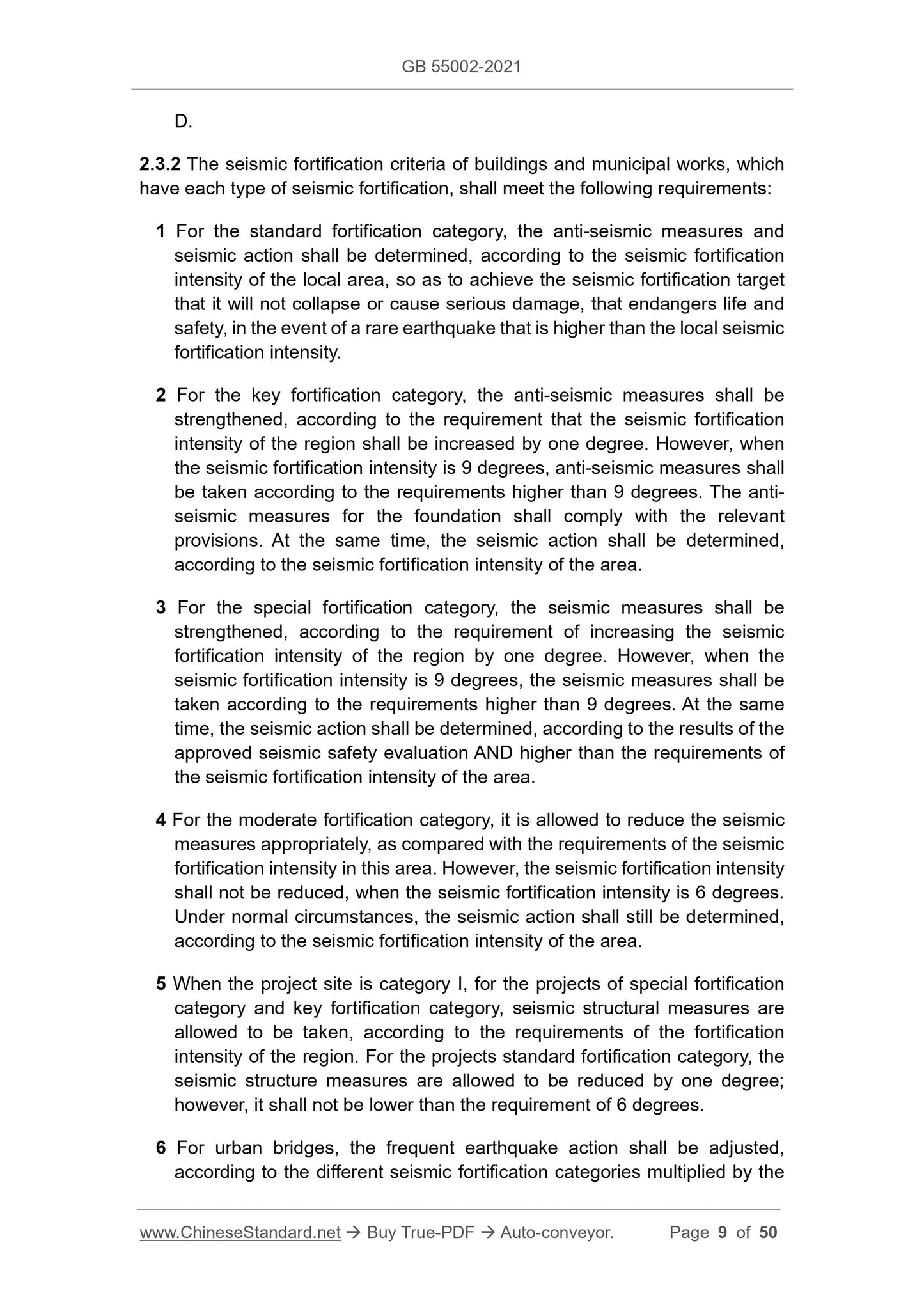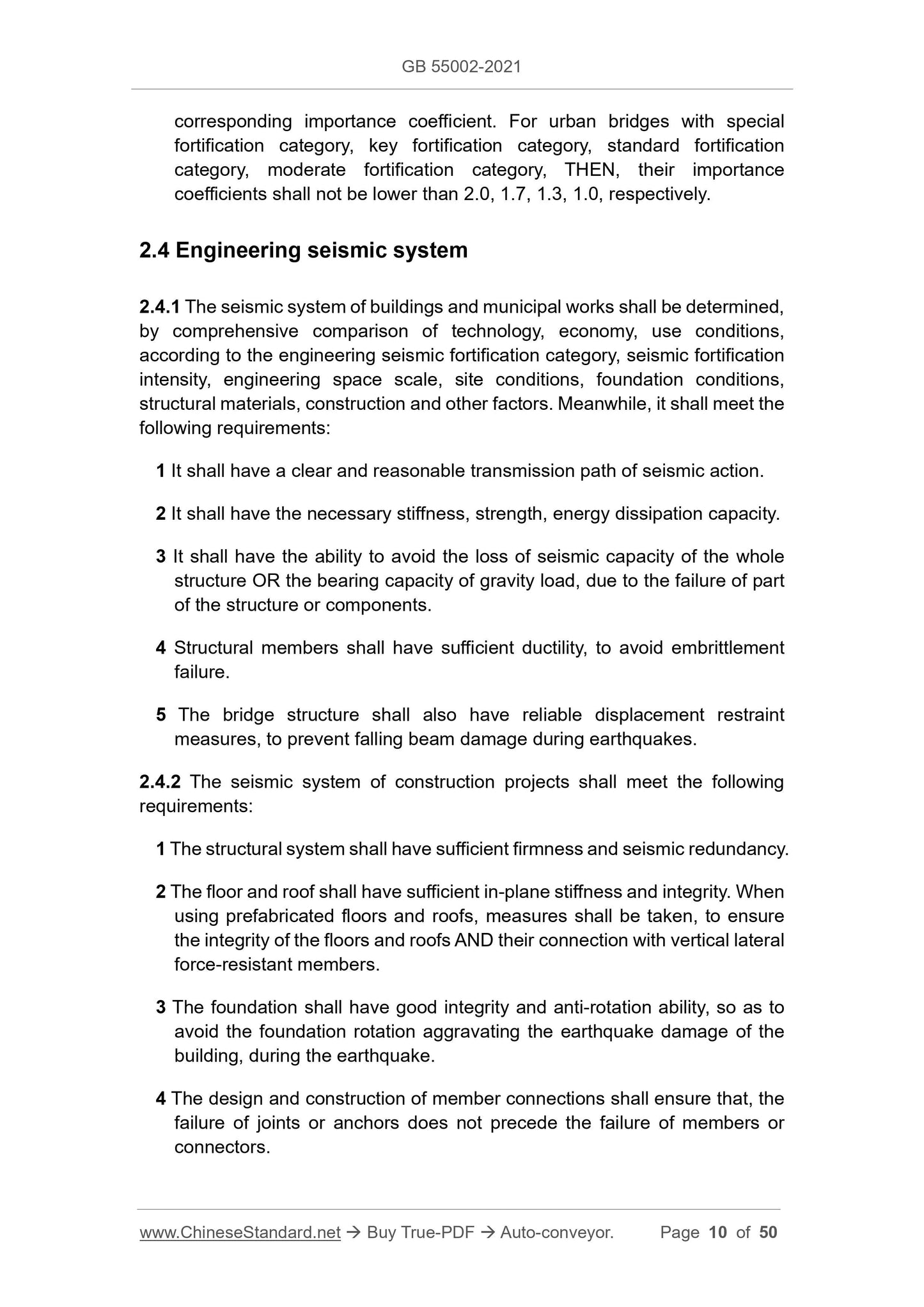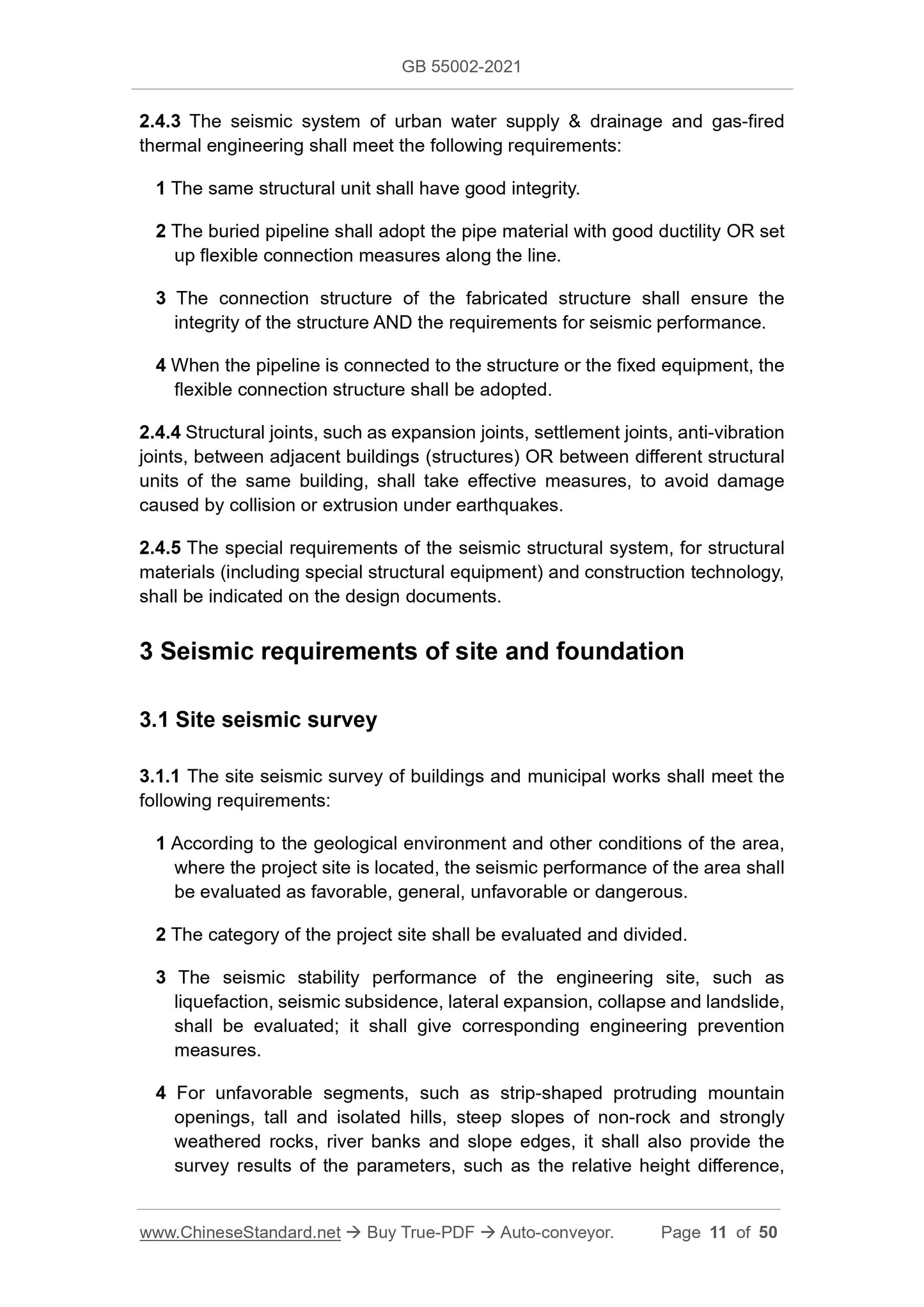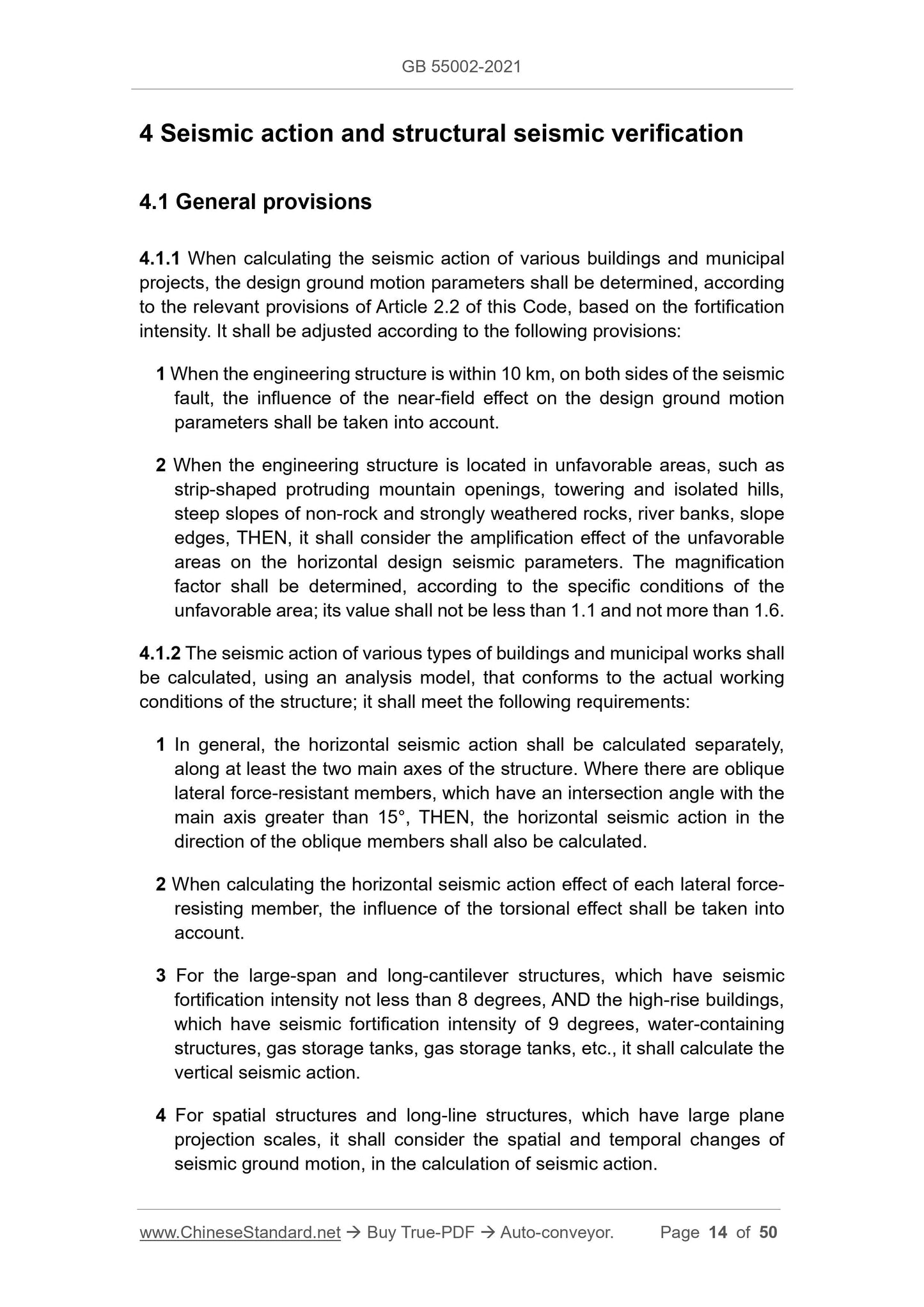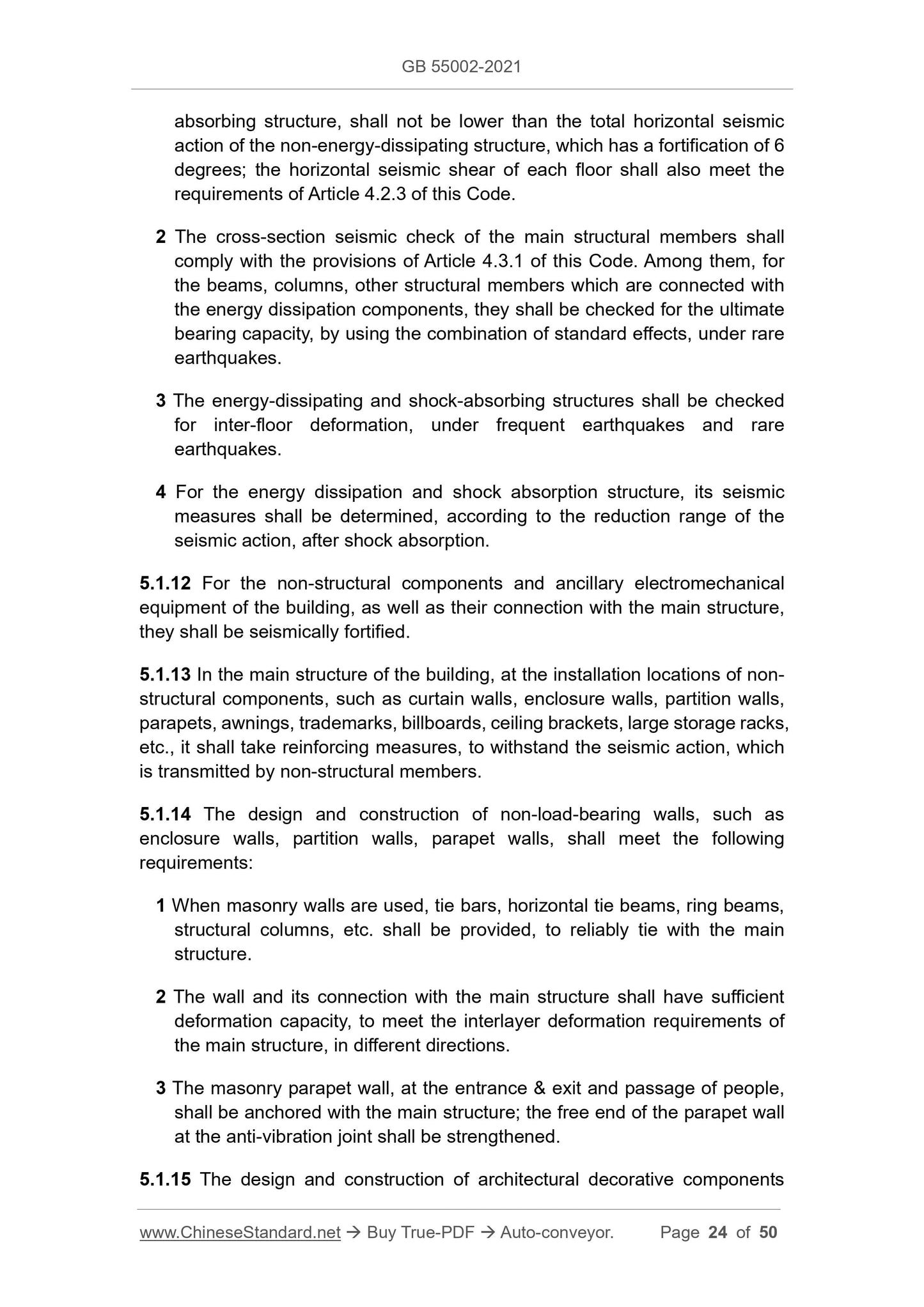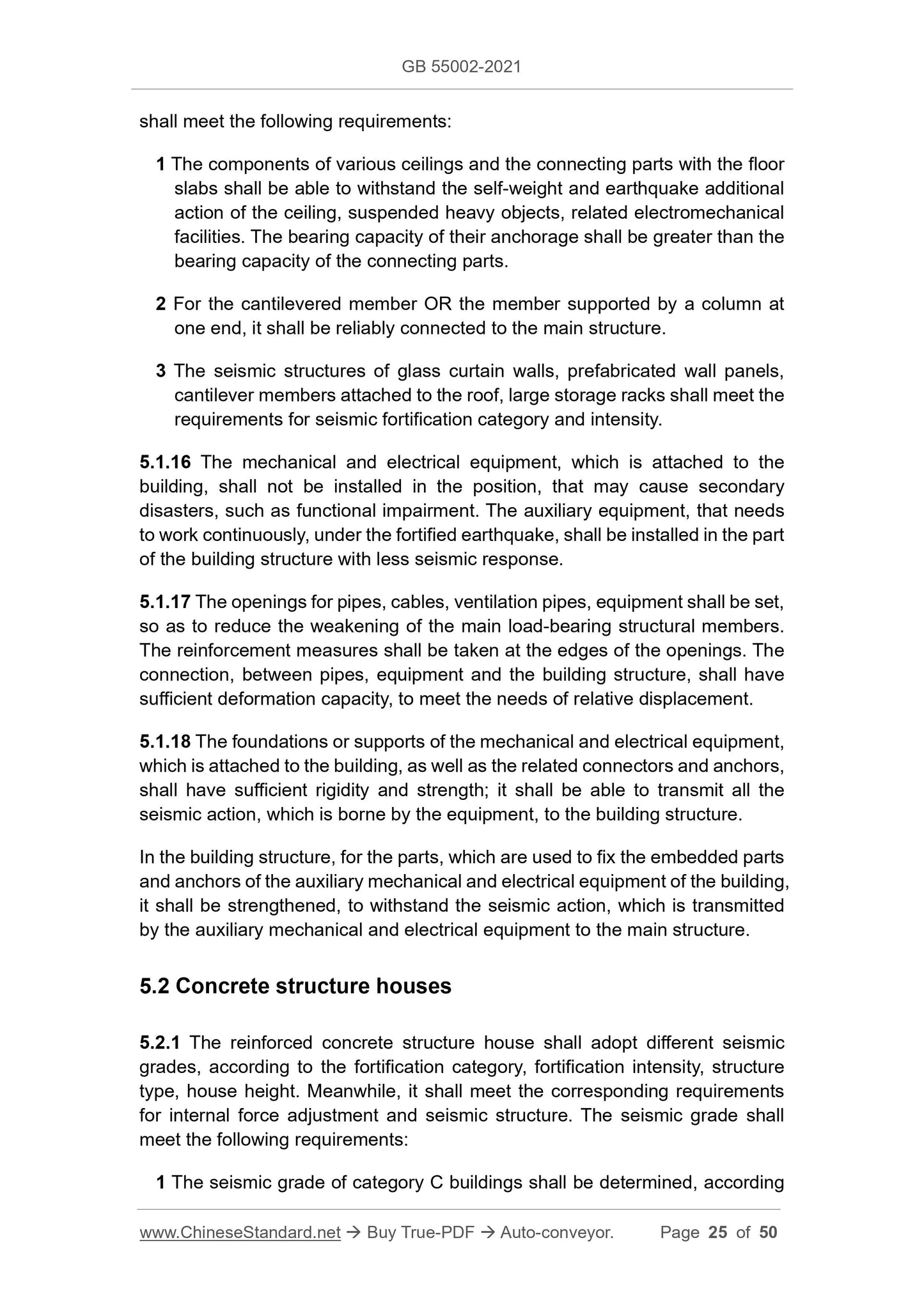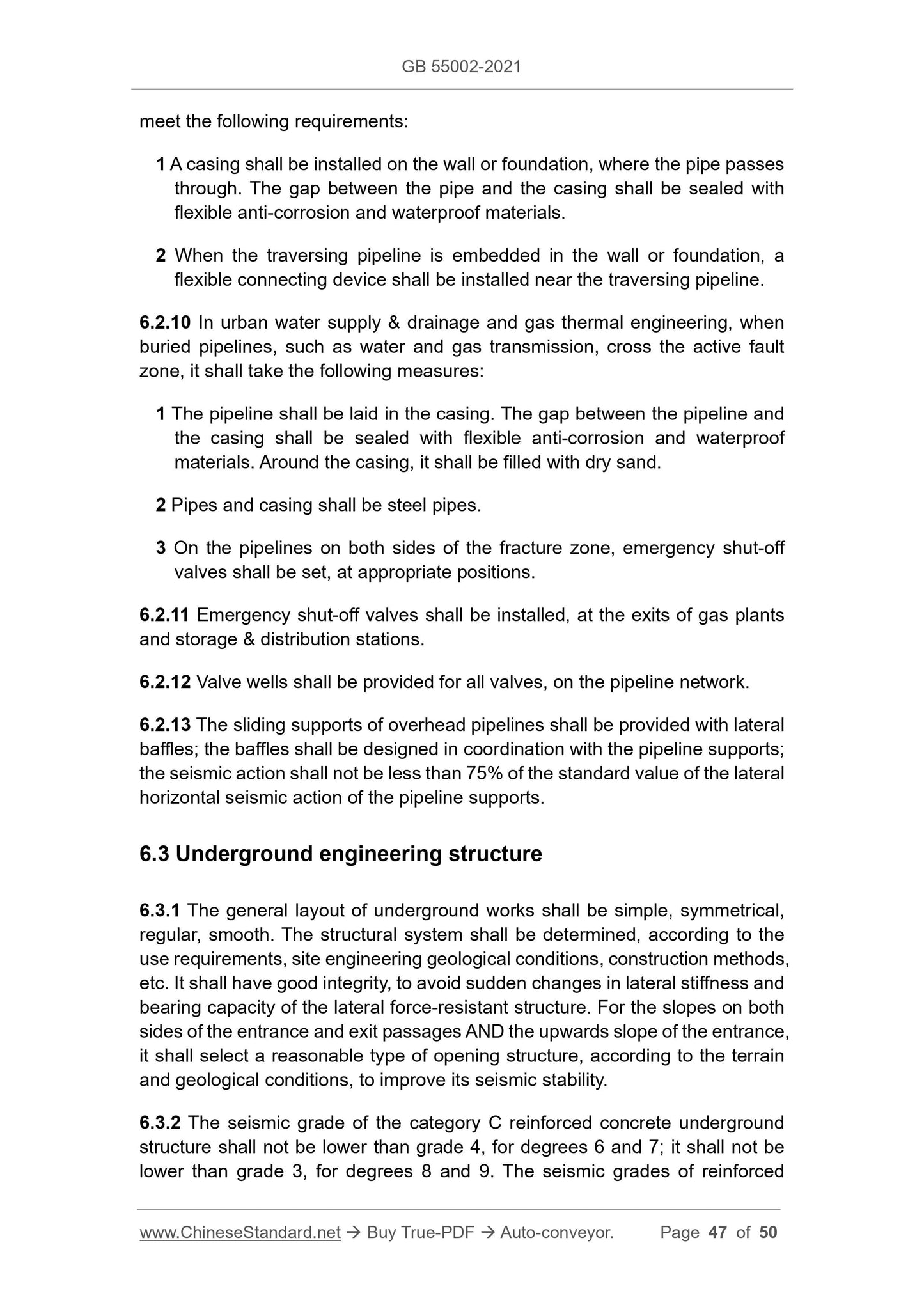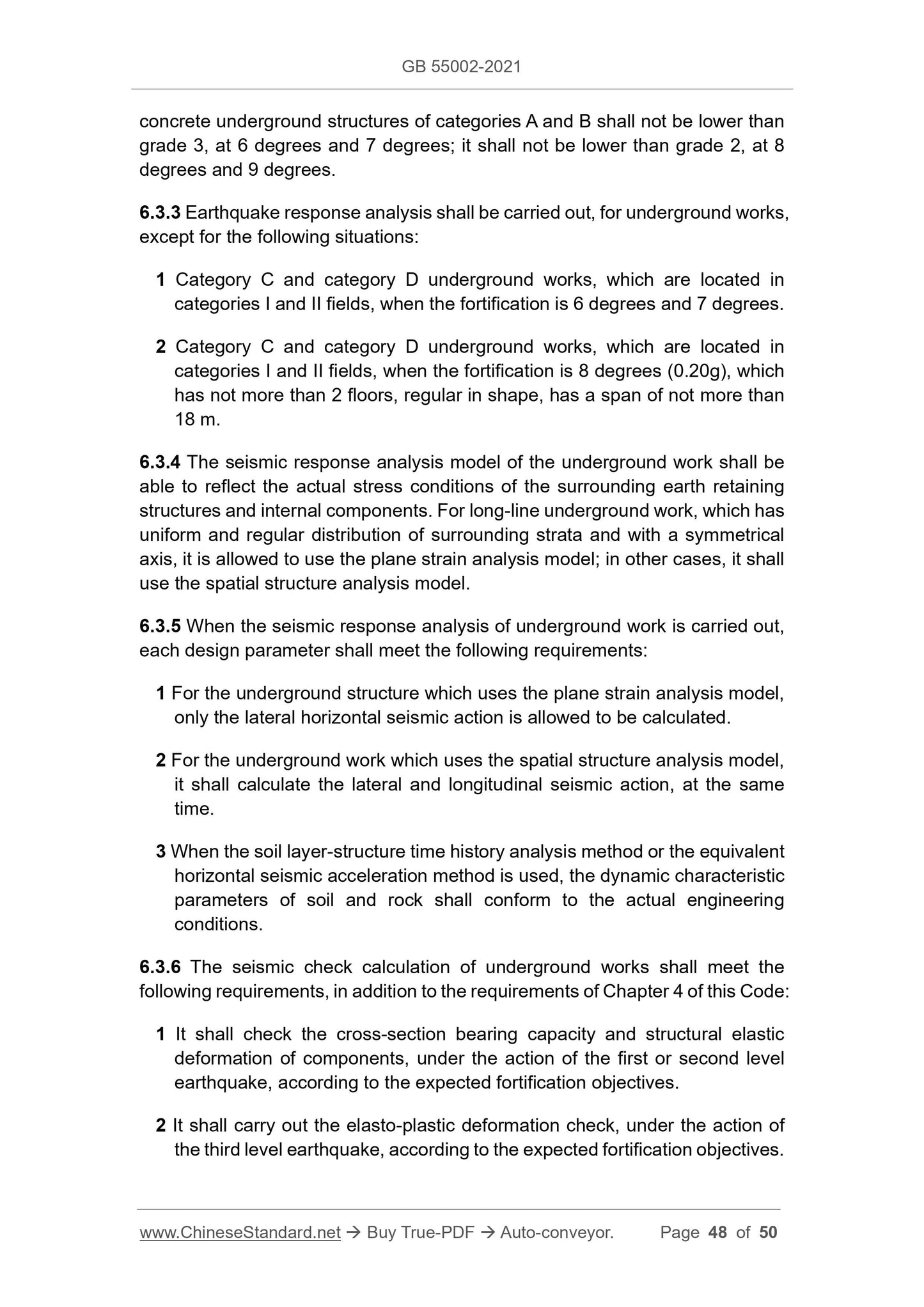1
/
of
11
www.ChineseStandard.us -- Field Test Asia Pte. Ltd.
GB 55002-2021 English PDF
GB 55002-2021 English PDF
Regular price
$905.00
Regular price
Sale price
$905.00
Unit price
/
per
Shipping calculated at checkout.
Couldn't load pickup availability
GB 55002-2021: Code for seismic design of buildings
Delivery: 9 seconds. Download (and Email) true-PDF + Invoice.Get Quotation: Click GB 55002-2021 (Self-service in 1-minute)
Newer / historical versions: GB 55002-2021
Preview True-PDF
Scope
1.0.1 This Code is formulated, in order to implement the national laws andregulations on earthquake prevention and disaster reduction of buildings and
municipal projects, implement the principle of prevention first, so that buildings
and municipal projects can achieve the target of reducing earthquake damage,
avoiding casualties, reducing economic losses after seismic fortification.
1.0.2 All kinds of newly-built, expanded, reconstructed buildings and municipal
projects, in areas which have a seismic fortification intensity of 6 degrees and
above, must be seismically fortified. The survey, design, construction, use
maintenance of engineering projects must comply with this Code.
1.0.3 Whether the technical methods and measures, which are adopted in the
construction of the project, meet the requirements of this Code, shall be
determined by the relevant responsible entities. Among them, innovative
technical methods and measures shall be demonstrated to meet the
performance requirements in this Code.
Basic Data
| Standard ID | GB 55002-2021 (GB55002-2021) |
| Description (Translated English) | Code for seismic design of buildings |
| Sector / Industry | National Standard |
| Classification of Chinese Standard | P23 |
| Word Count Estimation | 49,489 |
| Issuing agency(ies) | Ministry of Housing and Urban-Rural Development of the People's Republic of China; State Administration for Market Regulation |
Share
